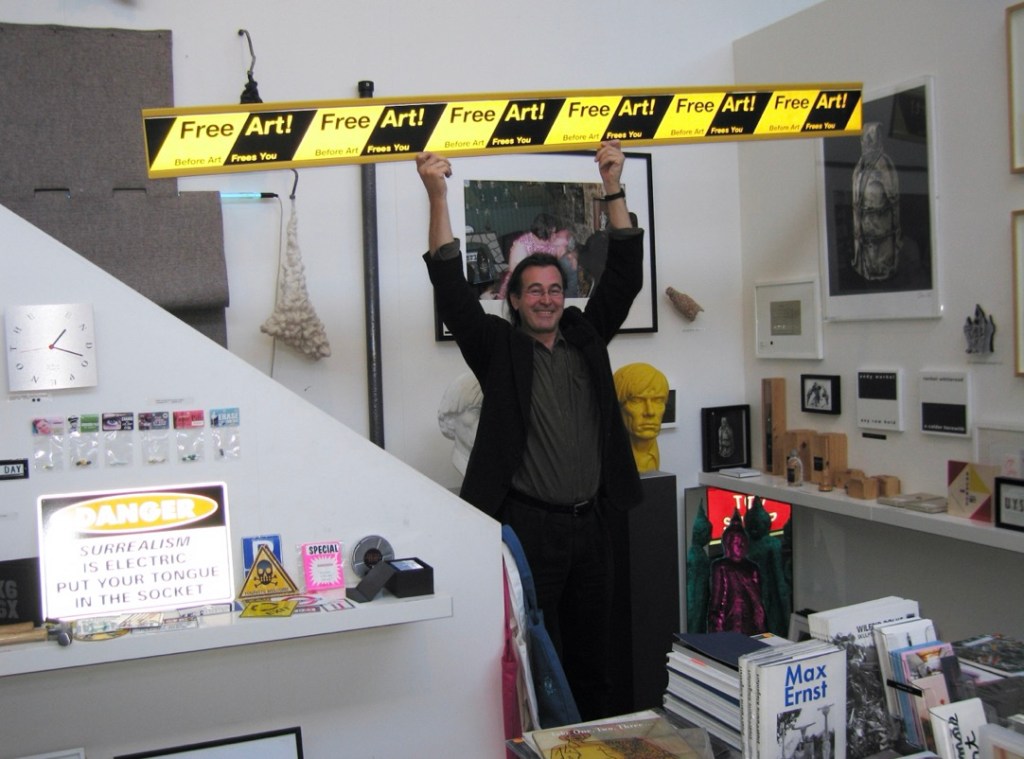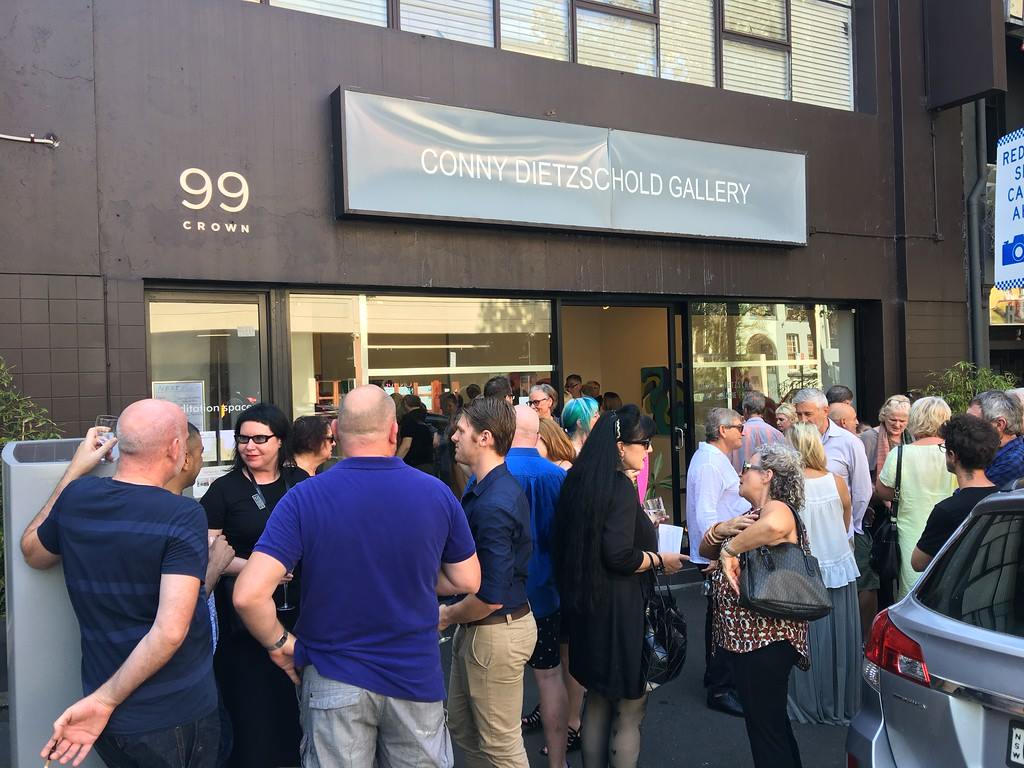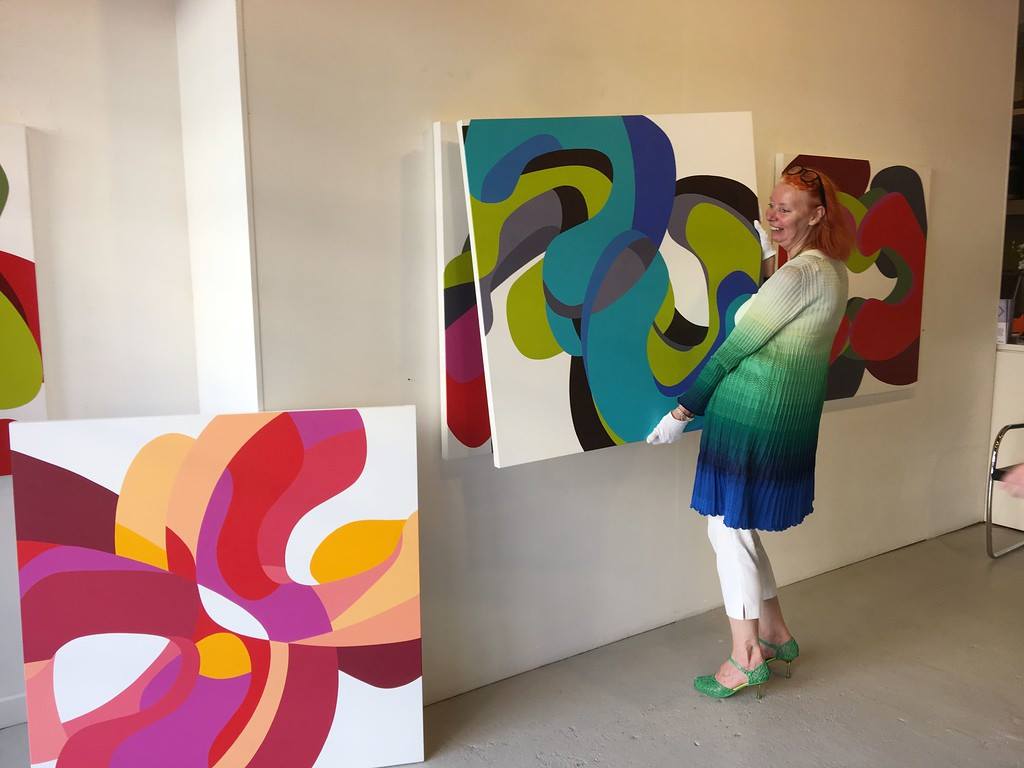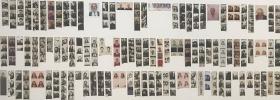Sydney Gallerist Conny Dietzschold passed away on Friday in Germany, after a long battle with cancer.
While she will be remembered for her flaming ‘bottle red’ hair and towering stature, many will also remember her for her role introducing many international artists to the commercial gallery landscape in Australia.
Writer and Curator Claire Taylor knew Dieztschold as her Gallery Manager, when she first came to Sydney. She described: ‘Conny was a figure unlike any other in the Australia contemporary art community. A strong personality who some found divisive. She had equally strong ideals and was driven by an enormous sense of belief in the artists she represented.’
She established Conny Dietzschold Gallery in 1989, formerly Die Weisse Galerie, and presented a full program across spaces in Sydney, Cologne, and in later years, Hong Kong.
Dietzschold was among the first residents of the 2 Danks Street Arts Complex, Waterloo (Sydney), developed by patron Leo Christie, opened in 2001. It was a thriving hub.
Independent curator Judith Blackall said: ‘I remember when Conny arrived in Sydney and opened the space in Danks Street. There was excitement that a gallerist from Germany had come to Australia.’
That same year she established her space in Cologne, which would be a platform to show Australian and New Zealand artists abroad.
Dietzschold had a truly international list of artists – but not in a big fanfare way. It was just how she approached contemporary art, and it was an expansive view that benefited viewing audiences here in Australia.
‘Connie was very enthusiastic about contemporary art, and was regarded as a colourful gallery identity,’ added artist Tom Loveday. ‘She showed a lot of European artists as well as Australian artists.’
That stable of artists hailed from Germany, Singapore, Italy, Korea, the Netherlands, Switzerland, Bulgaria, Brazil, Norway, and America.
‘Underpinning her gallery model was an approach based on cultural exchange: representing Australian artists in Germany and representing international artists in Australia. She worked closely with Austrade, the Goethe Institut and consulates in Sydney to support her artists to travel to make the most of these initiatives,’ said Taylor.
‘I loved the way she would talk about her artists; she saw her role very much as an educator,’ said artist Elizabeth Day, who also made note of Dietzschold’s annual festive celebrations, saying she ‘really went to town to welcome people’ and that, ‘Conny had incredible warmth about her.’
She also established Multiple Box Sydney – first as an annexed section of her Danks Street space specialising in editioned prints and artists multiples – and then later launched as an online art shop.
Visual poet and artist, Richard Tipping said: ‘To visit Conny Dietzschold’s Multiple Box was to enter a lollyshop in Art Heaven, filled with small bright impossible sculptures and prints which challenged both eye and mind.’
He continued: ‘…this was an international zone with no passport required. Conny’s enthusiasm for postmodern art, with her husband Florian Schaeffer’s constant support, made Multiple Box a special place for over a decade.’

‘Conny acutely believed in the idea of art being for everyone, whether that was through art in the public domain or through the relative price accessibility of multiples. Exhibitions such as solo shows of American artist Kurt Perschke to coincide with his Red Ball Project in Sydney for Art & About, or Christo and Jeanne-Claude editions, are examples of how pioneering she was in demystifying public art and demonstrating how accessible it could be,’ said Taylor.
But the Danks Complex succumbed to the pressures of encroaching developers and closed its doors in 2013. She continued to participate in a number of international art fairs each year, and collaborated with a gallery in Hong Kong to present exhibitions, while she looked for a new Sydney space.
In 2015 she reopened a space in Sydney on 99 Crown Street, Darlinghurst, after a costly renovation. In some ways, keeping the space afloat was a challenge.
‘Like all of us, she had her flaws, but she was really fabulous,’ said Day, adding that ‘many misunderstood her.’
This is a thought continued by Taylor: ‘The GFC saw many Sydney galleries close. It is to her credit that Conny found alternative premises and kept the gallery doors open for so many years after in very difficult business conditions, without the support of a financial backer.
‘Not many galleries can claim a track record of more than 25 years, which Conny did across her German and Australian initiatives.’

Thinking outside the square
The gallery described had ‘a focus on new tendencies in conceptual, concrete, and constructive art.’ This was an exciting prospect for the commercial gallery sector in Australia, and it meant for a breath of fresh air.
‘Conny Dieztschold’s galleries were really important in creating a platform for Australian artists whose work was conceptual or critically-engaged, representing artists whose work she found compelling rather than being driven by commercial considerations,’ said Talyor.
Speaking with artist Mark Booth, he described: ‘Conny was always supportive of artists who had (like myself) unconventional practices and thought outside the square. It wasn’t all about commerciality and sales. She had a certain aesthetic – a minimalism and non-conformism that she looked for in the work of her artists.’
Day told ArtsHub: ‘She was importing Christo prints of his big installations, and was really endorsing a practice outside the normal realms, promoting public art and installation before any other gallery was taking an interest in that practice – it was amazing for me as an artist working in installation.’
She continued: ‘At the time I was making grass work, which was completely impossible to sell. She was so brave. But the flipside of that was her downfall, that she was so idealistic and purist in celebrating the type of work she showed.’
Taylor remembers installing an exhibition of Day’s with Dietzschold on one occasion, saying that, ‘A highlight of my time at the gallery, [was] a late night conversation after installing a solo exhibition by Elizabeth Day, which included an installation work titled The Fragility of Goodness, 2004, made from knitted white baby wool. This work hung in dialogue with one of Day’s Unravelling of form pieces: a framed, unravelled balaclava, whose eyelets and mouth remained in tact… The conversation about these works stretched into an all-nighter and left me in absolutely no doubt as to the high regard in which Conny held her artists and her conviction about the importance of their practice.’
‘She was a tireless advocate for her artists to work beyond gallery contexts, and had a very clear vision of the potential for artwork integrated into property developments and infrastructure projects,’ she added.
‘I hope she is remembered for all the fearless conversations she started,’ Taylor concluded.
Dietzschold is survived by her husband Florian Schaeffer.





